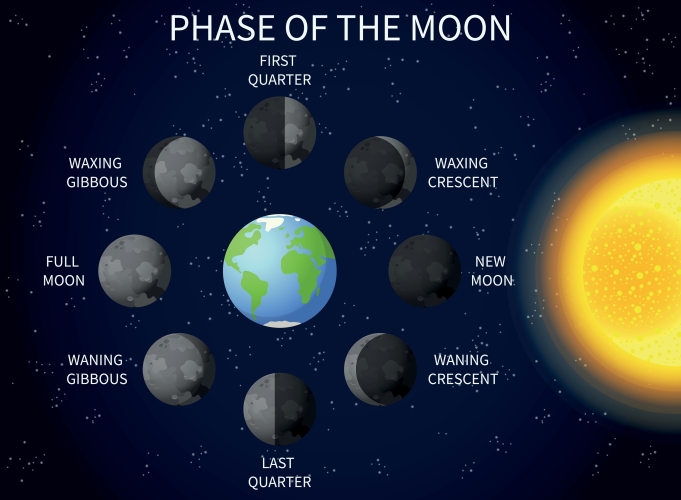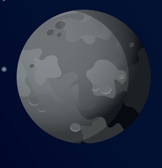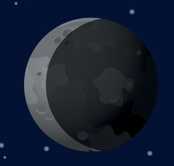You may have noticed that the moon doesn’t always appear the same shape in the sky.
The moon itself stays the same shape but the Sun's rays reflect on different parts of it depending on where it is on its orbit around the Earth.
It takes the moon around 28 days, which is called a lunar month, to orbit (travel around) the Earth.
The diagram below shows how the moon looks to us on Earth depending on where it is in relation to the Sun. We call these the phases of the moon.
Phases of the Moon

When the moon is between the Sun and Earth, the Sun can’t shine on the side of the moon that we can see from the Earth. This means that the moon isn’t visible to us. We call this a new moon (even though we can’t see it). Can you see the new moon on the diagram?
From here, the moon orbits the Earth in an anticlockwise direction and we start to see more of the moon as it moves around. This is because the Sun can reach parts of the side of the moon that faces the Earth.
We then see a crescent shape, called a waxing crescent.
When the Sun reaches the half of the side of the moon that we can see from the Earth, we call it a waxing half moon. The name half moon is deceiving as we’re actually only seeing one quarter of the moon.
Only one half of the moon is facing the Earth at any time and when half of this half is lit up by the Sun, it’s actually only one quarter of the entire moon! Now that sounds confusing. This is why some people call a half moon the first quarter.
A waxing half moon then turns into a waxing gibbous.
The word waxing tells us that we are gradually seeing more of the moon each day until it becomes a full moon.
A full moon is where the Sun can reach all of the side of the moon that we can see from the Earth. This can be a confusing name as when we are looking at a full moon, we are actually only seeing half of the moon!
After a full moon, the moon begins to wane. Waning means we gradually see less and less of the moon lit up by the Sun in the sky.
We see a waning gibbous, then a waning half moon (sometimes called last quarter) and finally a waning crescent.
Can you see how the names are the same but with waning in front of them instead of waxing?
The crescent, half moon and gibbous shapes flip to the other side of the moon too!
After all of this, we get a new moon and the cycle repeats itself for another 28 days…well it’s actually 27.3 days to be super precise!
In this activity, you’ll be answering questions about the phases of the moon, so make sure you study that diagram carefully before moving on.
Remember that you can look back at this introduction at any point by clicking on the red help button on the screen.











